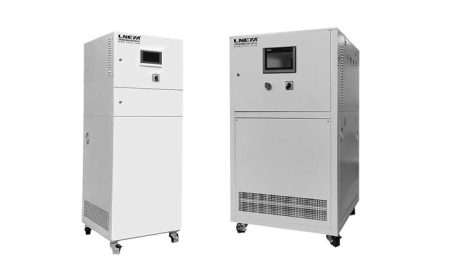Semiconductor Package Temperature Control
Basic requirements for semiconductor packaging temperature
Semiconductor devices need to follow certain temperature requirements during their manufacturing and use. Among them, semiconductor packaging temperature is a very critical factor. Generally speaking, semiconductor packaging temperature requirements should include the following aspects:
1. The packaging temperature cannot be too high. Different types of semiconductor devices have different packaging temperature requirements. On the one hand, if the packaging temperature is too high, it will affect the electrical performance and reliability of the semiconductor device; on the other hand, if the packaging temperature is too low, mechanical stress may occur, affecting the functional performance of the semiconductor device. Therefore, the appropriate packaging temperature must be selected according to specific requirements when formulating the packaging solution.
2. The packaging temperature must comply with the manufacturing process. During the semiconductor manufacturing process, the selection of packaging temperature needs to take into account the integrity and reliability of the process. Generally speaking, manufacturers select packaging temperatures based on product requirements and manufacturing processes to ensure product quality and reliability.
3. Attention should be paid to ventilation and heat dissipation when packaging temperature. The semiconductor packaging temperature will generate a certain amount of heat. If the heat cannot be effectively dissipated, it will affect the working status and life of the semiconductor device. Therefore, during the packaging process, special attention should be paid to ventilation and heat dissipation issues, and appropriate materials and design solutions should be selected to ensure the stability and reliability of semiconductor devices.
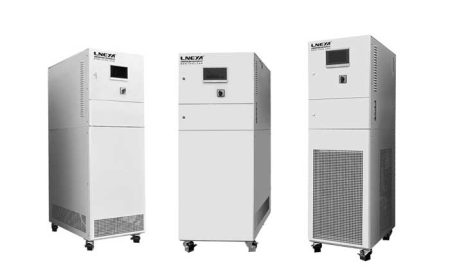
Factors affecting semiconductor packaging temperature selection
The selection of semiconductor packaging temperature is affected by many factors, including the following aspects:
1. Device type. Different types of semiconductor devices have different packaging temperature options. For example, the packaging temperature of silicon transistors is generally 200~300℃, while the packaging temperature of IGBT devices is generally 200~250℃.
2. Manufacturing process. The manufacturing process of semiconductor devices also affects the choice of packaging temperature. For example, during the wafer preparation stage, if the temperature is too high, the depth of the doped region may increase, affecting the electrical performance of the device; during the device structure preparation process, reasonable packaging temperature selection can alleviate mechanical stress and improve the reliability of the device. sex.
3. Packaging materials. The thermal expansion coefficient of semiconductor packaging materials also affects the choice of packaging temperature. If the thermal expansion coefficient of the packaging material is too different from that of the device material, temperature changes may cause mechanical displacement, negatively affecting device performance.
4. Ambient temperature. The selection of packaging temperature also needs to consider the temperature changes of the surrounding environment. If the surrounding environment temperature changes greatly, it may cause “thermal fatigue” in semiconductor devices and affect the life of the device.
In short, the temperature requirements for semiconductor packaging are very strict and require trade-offs and considerations among multiple factors. The selection of packaging temperature is not only related to the quality and reliability of the product, but also an important link that needs to be optimized when formulating semiconductor chip manufacturing and packaging solutions.
완벽한 온도 제어 시스템 설계 및 제조를 제공합니다. 표준 모델부터 완벽한 맞춤형 제품까지. 고객 서비스를 전문으로 하며 각 고객이 특정 요구에 맞는 최적의 온도 제어 시스템을 갖출 수 있도록 최선을 다하고 있습니다.
비표준 맞춤형 솔루션을 제공합니다. 단일 냉각 냉각기와 냉각 및 난방 콤보 장치를 모두 사용할 수 있습니다.
이메일: lilia@lneya.com WeChat ID: +8615251628237 WhatsApp: +86 17851209193

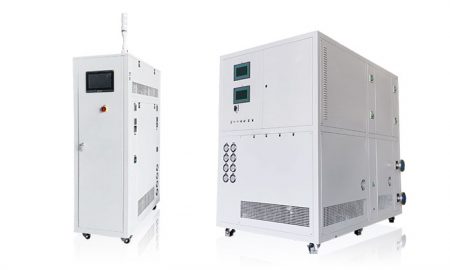
TES 시리즈 (맞춤형 디자인)
전자 부품의 정밀한 온도 제어에 적합합니다. 열악한 환경을 위한 반도체 전자 부품 제조에서 IC 패키징 조립 및 엔지니어링 및 생산 테스트 단계에는 전자 열 테스트 및 기타 환경 테스트 시뮬레이션이 포함됩니다.
| 온도 범위 | -45°C ~ +250°C 시리즈 | -85°C ~ +200°C 시리즈 | -60°C ~ +200°C 시리즈 | ||||||
| 냉각 용량 | 0.3 ~ 25kW | 0.25 ~ 25kW | 3 ~ 60kW | ||||||
| 참고: -150℃ ~ +350℃의 모든 온도 범위와 모든 냉각 용량을 맞춤 설정할 수 있습니다. | |||||||||

LTS 시리즈(불소화 액체) (맞춤형 디자인)
반도체 제조 공정에서 반응 챔버의 온도, 방열판의 온도, 열전달 매체의 불연성 유체의 온도 제어를 제어하기 위해 널리 사용됩니다.
| 온도 범위 | -20°C ~ +80°C 시리즈 | -45°C ~ +80°C 시리즈 | -60°C ~ +80°C 시리즈 | -80°C ~ +80°C 시리즈 | |||||
| 흐름 제어 | 7 ~ 45 L/min | 7 ~ 45 L/min | 7 ~ 45 L/min | 7 ~ 45 L/min | |||||
| 참고: -150℃ ~ +350℃의 모든 온도 범위와 모든 냉각 용량을 맞춤 설정할 수 있습니다. | |||||||||

FLT 시리즈 (맞춤형 디자인)
반도체 온도 제어 시스템 냉각기는 주로 반도체 생산 공정 및 테스트 공정에서 정밀한 온도 제어를 위해 사용됩니다. 반도체 산업을 위해 특별히 개발 및 설계되었습니다.
| 온도 범위 | +5°C ~ +40°C | -25°C ~ +40°C | -45°C ~ +40°C | -80°C ~ +80°C | -100°C ~ +80°C | ||||
| 냉각 용량 | 6 ~ 40kW | 2 ~ 15kW | 1~8kW | 0.6 ~ 3kW | 1.5 ~ 3kW | ||||
| 참고: -150℃ ~ +350℃의 모든 온도 범위와 모든 냉각 용량을 맞춤 설정할 수 있습니다. | |||||||||
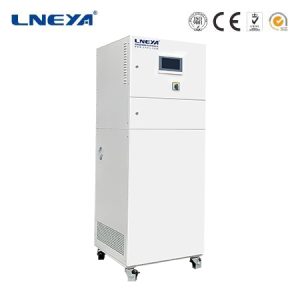
FLT Multi Channel Temp Contol (맞춤형 디자인)
Multi channel independent temperature control, which can have a separate temperature range, cooling and heating capacity, thermal conductivity medium flow rate, etc., adopts two independent systems. According to the required temperature range, steam compression refrigeration or ETCU non compressor heat exchange system can be selected. The system can be used for universal expansion tanks, condensers, cooling water systems, etc., which can effectively reduce equipment size and operation steps.
| 온도 범위 | -20°C ~ +90°C | -45°C ~ +80°C | -10°C ~ +80°C | -20°C ~ +100°C | |||||
| 냉각 용량 | 4kW | 5 ~ 13kW | 3 ~ 6kW | 8 ~ 15kW | |||||
| 참고: -150℃ ~ +350℃의 모든 온도 범위와 모든 냉각 용량을 맞춤 설정할 수 있습니다. | |||||||||

FLTZ 시리즈 주파수 변환(맞춤형 디자인)
이중 주파수 변환 시리즈 온도 제어 시스템, 순환 펌프 및 컴프레서는 모두 주파수 변환으로 조정됩니다.
| 온도 범위 | -30°C ~ +40°C | ||||||||
| 냉각 용량 | 5~11kW | ||||||||
| 참고: -150℃ ~ +350℃의 모든 온도 범위와 모든 냉각 용량을 맞춤 설정할 수 있습니다. | |||||||||
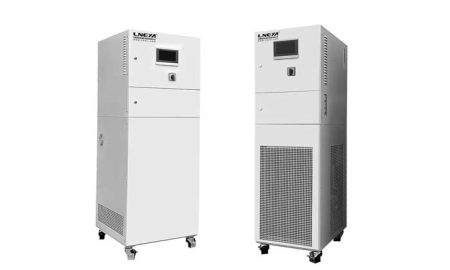
ETCU 시리즈(맞춤형 디자인)
열 교환 유형
컴프레서가 없는 시스템
| 온도 범위 | +5°C ~ +90°C | ||||||||
| 냉각 용량 | 5~30kW | ||||||||
| 참고: -150℃ ~ +350℃의 모든 온도 범위와 모든 냉각 용량을 맞춤 설정할 수 있습니다. | |||||||||

ZLFQ 시리즈(맞춤형 디자인)
냉각수 분배 장치
액체 냉각 장비는 반도체 테스트, 전자 장비 항온 테스트, 서버 지원 인프라 냉각 및 기타 유체 온도 제어 장소에 적합합니다.
| 온도 범위 | +5°C ~ +35°C | +5°C ~ +35°C | |||||||
| 냉각 용량 | 15 ~ 150kW | 200 ~ 500kW | |||||||
| 참고: -150℃ ~ +350℃의 모든 온도 범위와 모든 냉각 용량을 맞춤 설정할 수 있습니다. | |||||||||

MD 써멀 척 시리즈(맞춤형 디자인)
RF 디바이스 및 고밀도 전력 디바이스(IGBT 및 MOSFET) 테스트에 사용되며 실험실 평판(플라즈마, 생물학적 제품, 배터리) 등의 급속 냉각에도 사용할 수 있습니다.
| 온도 범위 | -75°C ~ +225°C | ||||||||
| 온도 정확도 | ±0.1℃ | ||||||||
| 참고: -150℃ ~ +350℃의 모든 온도 범위와 모든 냉각 용량을 맞춤 설정할 수 있습니다. | |||||||||
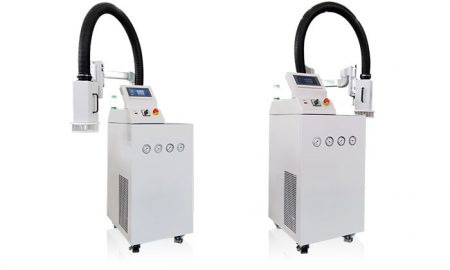
(맞춤형 디자인)
온도 제어 범위: -120°C ~ +225°C
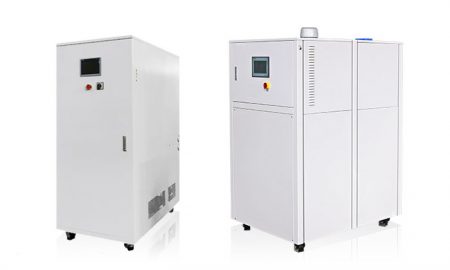
(맞춤형 디자인)
온도 제어 범위: -105°C ~ +125°C

(맞춤형 디자인)
온도 제어 범위: -110°C ~ -40°C
(맞춤형 디자인)
가스 응축 액화 회수에 적용. 배기 가스 또는 기타 전자 가스는 유도 통풍 팬 (진공 펌프)을 통해 장비에 연결되고 온도를 낮추어 액화, 수집 및 분리되어 수집 탱크로 분리되고 기타 가스는 배출되어 가스의 응축, 포집 및 회수를 실현합니다.
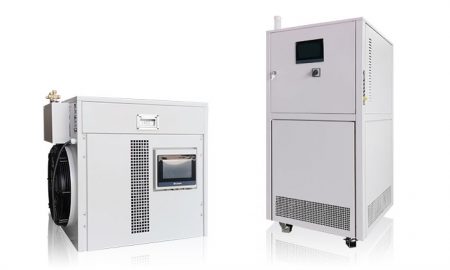
ZLJ/SLJ 시리즈(맞춤형 디자인)
열교환기의 열교환 면적은 작지만 열교환 용량이 큰 장소에 적합합니다. 또한 가스 포집에도 사용할 수 있으며 냉매가 트랩으로 직접 통과하여 증발하고 트랩 표면의 응축 효과를 통해 공간의 가스를 빠르게 포집합니다.
| 온도 범위 | -40°C ~ -15°C | -80°C ~ -50°C | -150°C ~ -110°C | ||||||
| 냉각 용량 | 0.5 ~ 4kW | 0.37 ~ 3.1kW | 2.5 ~ 9kW | ||||||
| ZLJ 시리즈 | SLJ 시리즈 | ||||||||
| 참고: -150℃ ~ +350℃의 모든 온도 범위와 모든 냉각 용량을 맞춤 설정할 수 있습니다. | |||||||||
 LNEYA
LNEYA
 简体中文
简体中文












































































